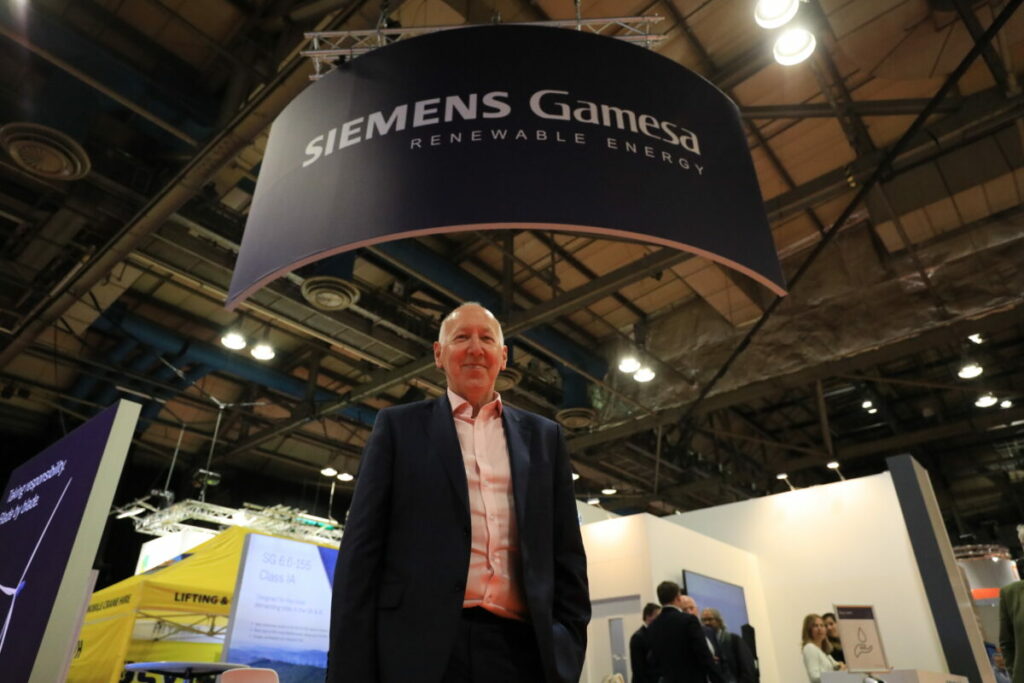Gillian Martin, Minister for Energy in the Scottish government, opened the second day of All Energy Glasgow by championing the 40GW reported pipeline of offshore wind, as well as 20GW of onshore wind by 2030. But, as many people in the industry are warning, these possibilities might not be possible if the grid isn’t upgraded to the required capacity.
From the audience, the most common question submitted was: ‘What is the Scottish government doing to reduce waiting times to connect to the grid?’. “I’m not surprised that’s the question you’ve all voted for,” Martin said, “I have the role of planning consent. We are looking at bringing down the time for that planning consent to happen. One of the things I really don’t want to see is for communities to be taken out of that.”
“The capacity of the grid isn’t really sufficient to take the enormous amount of electricity that I have just gone though in my speech,” Martin said. Planning and investment were both essential, she added, but “would that I had the power to do both.”
Steve Scrimshaw, Vice President Siemens Energy, began his career as a technical apprentice at 16, and now, as vice president of Siemens Energy, he sits on the government’s Green Jobs Delivery Group, launched by the Department for Business, Energy and Industrial Strategy (BEIS) last year, and the Hydrogen Advisory Group.
Like many business leaders in the renewable energy industry, he’s concerned that the grid infrastructure isn’t there to allow his company’s projects to start transmitting electricity across the country. Investing in renewable projects and grid upgrades has to go hand in hand, Scrimshaw told the All Energy conference, “grid is the most vital part and there is no transition without transmission.”
“If you look at Scotland, there’s 27GW or 30GW of planned wind, there’s a 2GW connection to England, and they’re building a 6GW connection in the sea, so what are you going to do with the rest of it?” Scrimshaw says.
Should the government step in to increase the amount of investment in the grid? Yes, he argues, “or try to create the environment for it. There’s a hell of a lot of money out there, what we need is the policy framework to make it happen.”

Scrimshaw also discussed the Energy Bill, which has just had its second reading in the House of Commons, after the Lords amended it to include an obligation for Ofgem to consider net zero targets. “I definitely think the regulator has a part to play,” Scrimshaw says, “but I think, let’s just get on and do stuff, and then if we don’t quite get it right we can change it. If you think of the Contracts for Difference (CfD) for offshore wind, they didn’t start off as CfDs, they’ve iterated over time, and instead of us getting it perfect first time, I would prefer it if the government, especially when we’re talking about hydrogen, I think they need to get on and do stuff.”
“The view is that the UK can’t match the Inflation Reduction Act (IRA), but what could we do to get things moving? Everybody’s saying the same thing, we’ve got to move faster, quicker, and the volume we’ve got to get up is very significant.”
Scrimshaw says the benefit of the IRA is that it is simple and generous, and without reducing the complexity of the policy framework in the UK, we risk falling behind.
The IEA’s World Energy Outlook projects that “to reach net zero emissions by 2050, annual clean energy investment worldwide will need to more than triple by 2030 to around $4 trillion (£3.19 trillion),” and Scrimshaw says that private sources will contribute £2.39 trillion ($3 trillion) of this. “Yes we’ll see an increase in public spending, but around 70% of investments will need to be carried out by private developers, consumers and financiers responding to market signals and government policies,” he says.
Growing demand for electricity was also a problem, along with related supply chain issues. “National Grid needs to deliver 5 times as much in the next 7 years as in the last 40 years, including expanding the grid’s substation capacity by almost 50%,” Scrimshaw says, “and we are already seeing extended lead times for critical equipment”.
“Thinking supply chain means talking about standardisation, encouraging repeat designs for components, assets, and full schemes will allow for faster production. Secondly, with raw materials in such high demand, global capacity will focus on countries where it’s easier to do business.”
“Time is running out for delivering a net zero electricity system by 2035,” Scrimshaw concluded. “But with pragmatic policy amendments, simplification of a framework for investment in our infrastructure, it just might be achievable. I stood here last year and said there were less than 1 billion seconds to achieve net zero by 2050. If you look at that for 2035, we’ve got just over 100,000 hours to get this done. The clock’s ticking, we’d better get on.”





